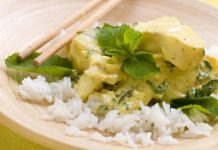
The story goes that in 1949, a fifteen-year-old German boy named Wolfgang Blass ran away from school. His distraught parents gave him an ultimatum: either he must get back to school or go on a three-year apprenticeship in the wine business. Wolfgang took the second option. As it turned out, it was the right choice.
The young Wolfgang went to Reims to study wine production and eventually became the youngest person ever to gain the equivalent of a Master’s Degree in wine. For a time, he worked in England at Avery’s of Bristol and studied the art of blending and in 1963 he moved to Australia where he got a job at a winery. Six years later he acquired a small plot of land on Bilyara Road near Nuriootpa, now a major wine centre in the Barossa Valley. Having discovered that the name bilyara was the aboriginal word for an eagle hawk, Wolfgang decided that this bird would become the symbol of his winery. To this day, there’s a picture of an eagle hawk on every bottle of Wolf Blass wine. And they are huge. The birds I mean, not the bottles.
The eagle hawk is the largest bird of prey in the world. It has a wing span of over seven feet and it’s about a yard long. I’d certainly give one a wide berth. It’s more correctly known as the wedge-tailed eagle and had long, broad wings, fully feathered legs and as you may have guessed, a wedge-shaped tail. It’s a superb flyer and can soar for hours on end at around six thousand feet and sometimes even higher. No one seems to know why eagle hawks fly so high. Perhaps they just enjoy a good view.
Wolf Blass winery has grown from a humble shed in a field to one of the most successful companies in South Australia and has won over 3,000 awards for its range of exceptional wines. I have had the pleasure of tasting Wolf Blass wines many times and some of the high-quality range are splendid, with character and integrity. Sourced from many different vineyards in South Australia, Wolf Blass wines have always had a distinctive style. The Eaglehawk range is made up of entry-level wines for everyday drinking and you can find them in many outlets in Thailand.
Wolf Blass Eaglehawk Chardonnay 2019 (white), Australia.
Eaglehawk wines are genuine it vitis vinifera wines made entirely from wine grapes. Yet they’re the same price as you’d pay for locally blended “fruit wine” such as Mont Clair, Peter Vella and Mar y Sol. Why buy a bottle of fruit wine when you can buy the real thing for the same price?
Chardonnay grapes originated in the Burgundy region of Eastern France but they’re now grown wherever wine is produced. It’s a remarkably versatile grape. In warm climates it tends to produce a rich, fully scented wine with tropical fruit flavours. This classic Australian Chardonnay certainly looks young. It’s a delicate pale gold with the faintest tint of green. There’s an enticing aroma of peaches, honeyed melon and a faint citrusy aroma that lurks shyly in the background. The taste came as a surprise for it wasn’t as dry as I was expecting. There’s plenty of fruit on the palate and only light acidity. It’s a pleasant commercially-styled wine but it has that extra bit of class that the wine-makers at Wolf Blass seem to manage. And “class” however you define it, is something you’ll never find in simple fruit wine.
It could partner fully-flavoured chicken and veal, or pasta in a creamy sauce. But you know, I often feel that warm-climate Chardonnay doesn’t always need food, for this one is most satisfying as a stand-alone drink, although it comes at 13.5% ABV which I admit is a getting a bit close to the top of the tree.
Wolf Blass Eaglehawk Cabernet Sauvignon 2019 (red), Australia.
Wines made from the Cabernet Sauvignon grape come in a variety of styles. The grape is most closely associated with the Bordeaux region of France. Although most of the Cabernet Sauvignon there is blended with other grapes and made into general purpose table wine, some of the more famous châteaux convert Cabernet Sauvignon grapes into some of the finest and most expensive wines you are likely to encounter, if you can afford them. Although I can think of exceptions, warm-climate Cabernet Sauvignon is generally richer, fruitier and fuller than its French cousins. Some Australian Cabernets are known for their full-bodied, hearty style and this is one of them.
This Eaglehawk Cabernet is a dark ruby red with an aroma of rich, berry fruit and blackcurrant that’s worth lingering over before tasting the wine. It smells a lot more expensive that it costs, too. You’ll find it has a good solid body, loads of blackcurrant on the palate with a dash of spice. You might even pick up a trace of mint. There’s a lingering finish with soft tannins but unlike the Chardonnay, this stylish wine seems to call for food. The obvious partner would be beef, especially a rich dish like Beef Stroganoff, though this wine would elevate a simple beef burger to heavenly heights.
 |
 |
 |





